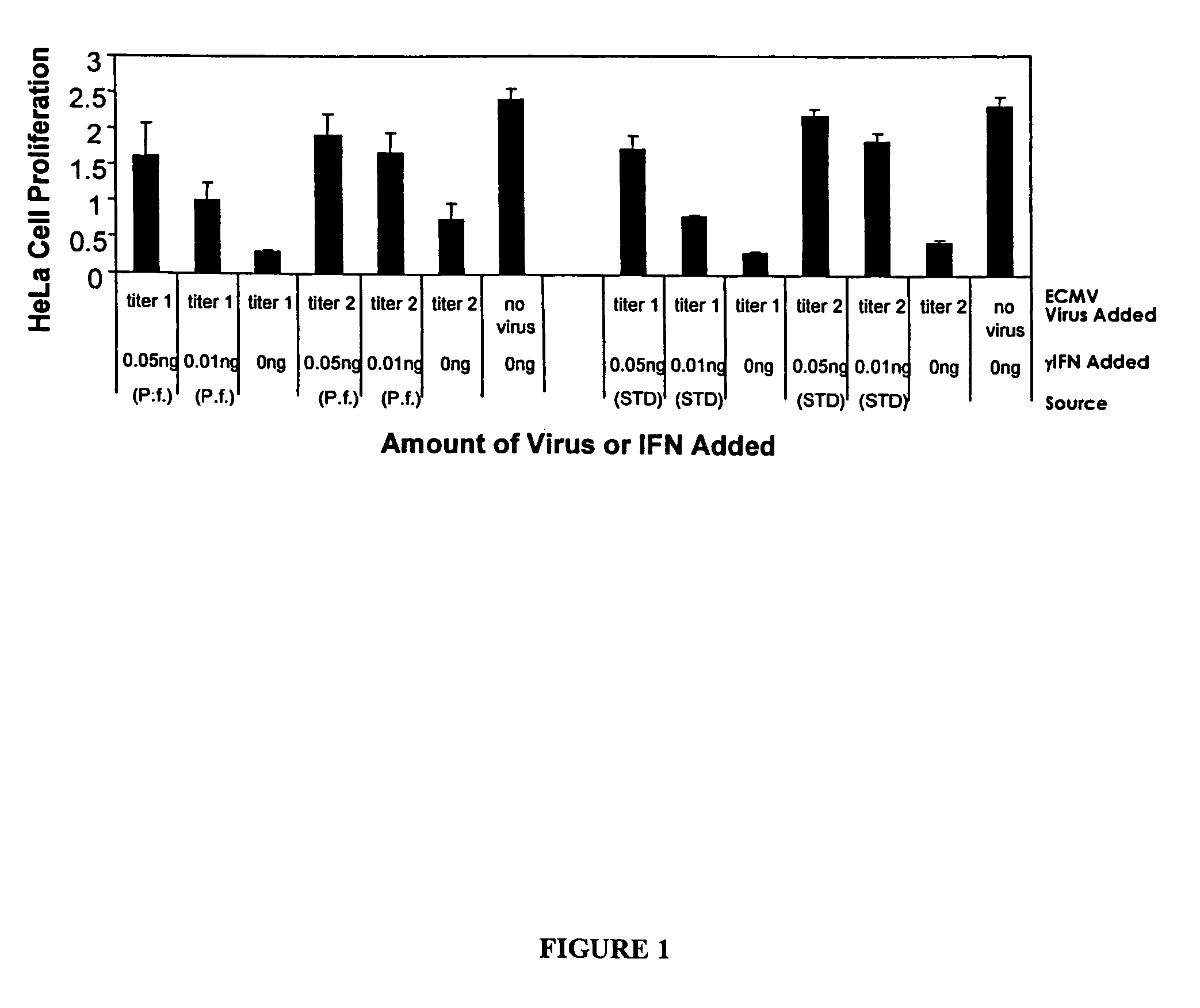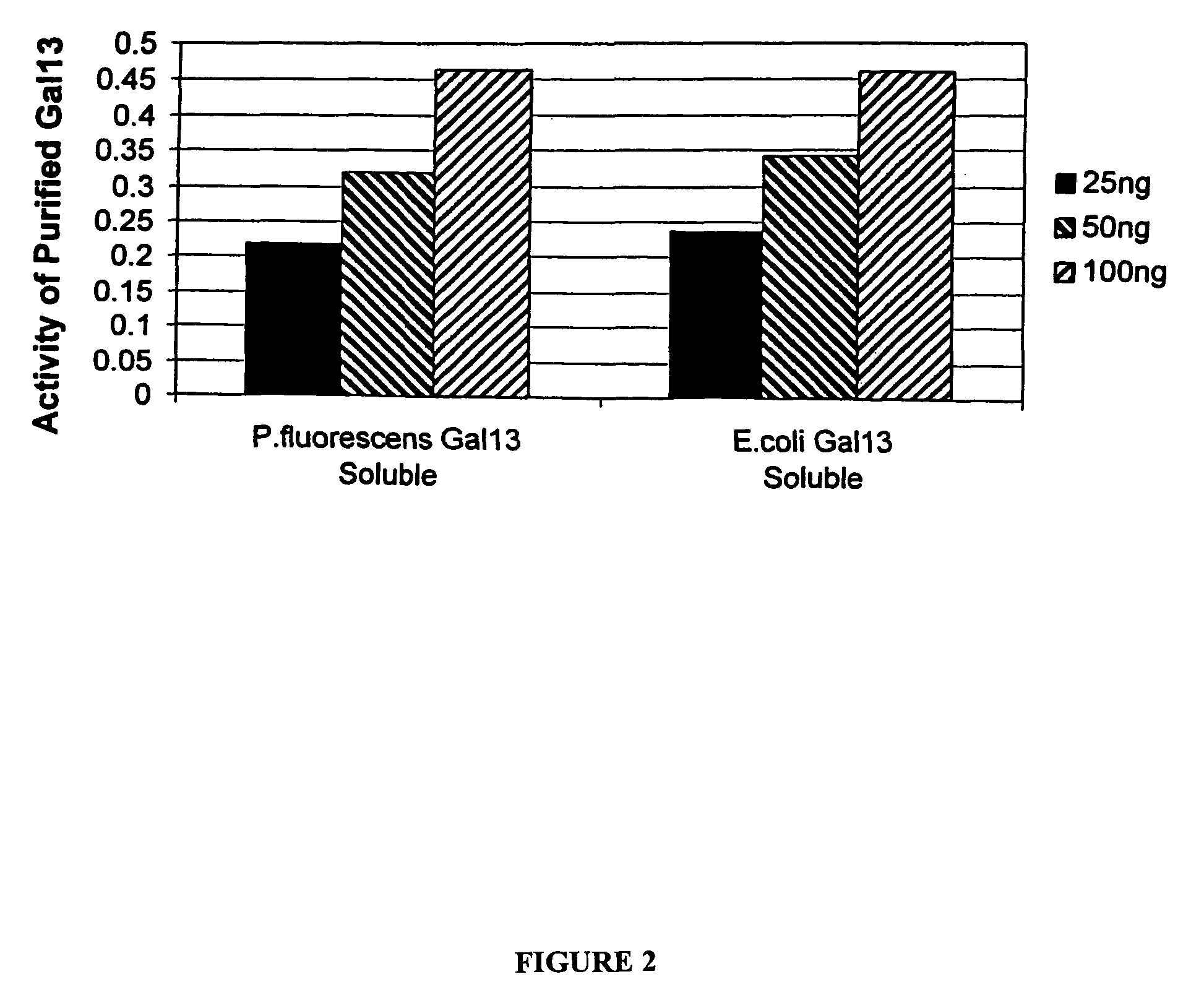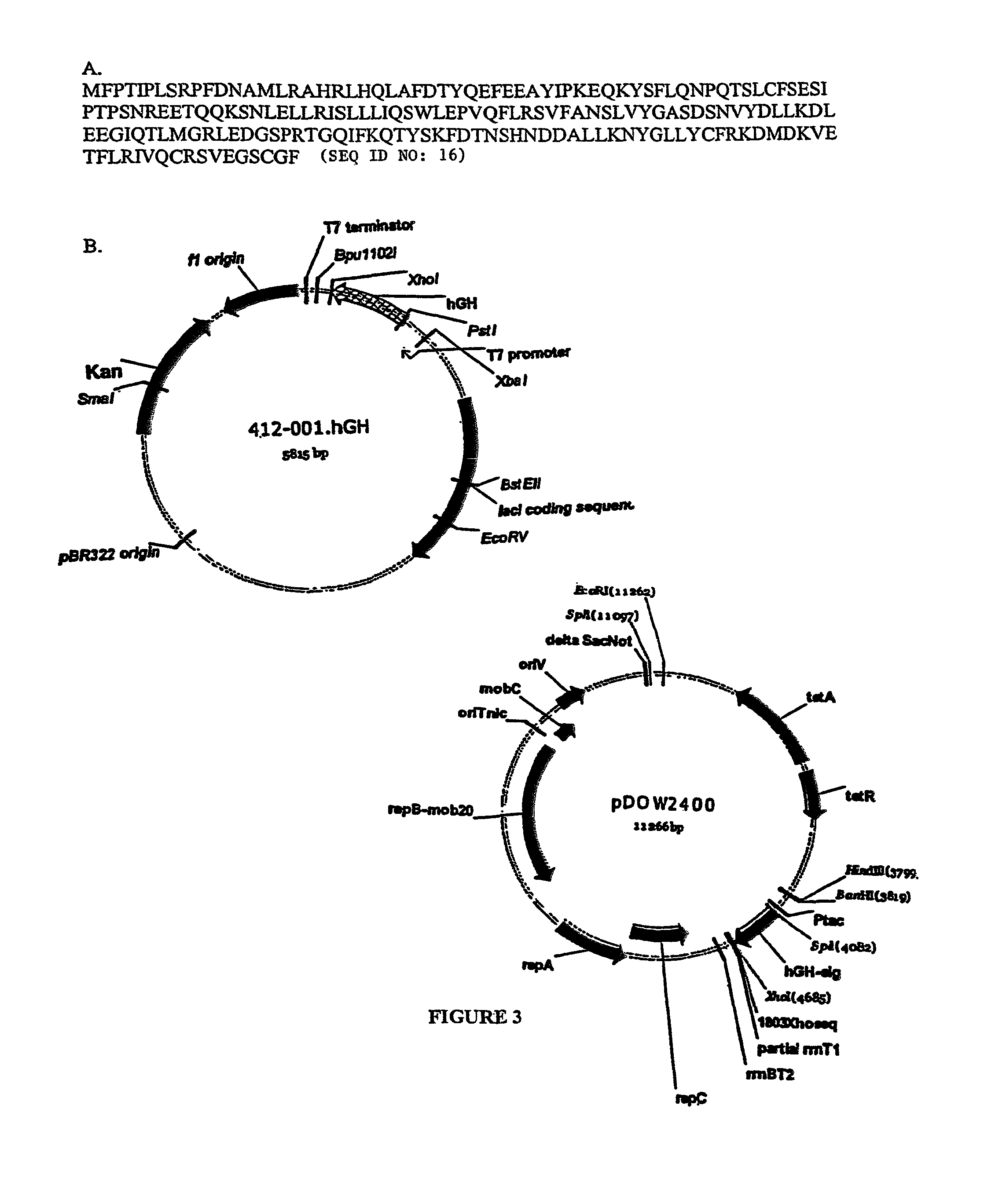Expression of mammalian proteins in Pseudomonas fluorescens
a technology of pseudomonads and mammalian proteins, which is applied in the field of recombinant mammalian protein expression by pseudomonads, can solve the problems of hampered development and manufacturing of therapeutically useful proteins, inefficient and high-cost and inefficient production of proteins in living cells. , to achieve the effect of reducing protein production, increasing growth time, and increasing protein production
- Summary
- Abstract
- Description
- Claims
- Application Information
AI Technical Summary
Benefits of technology
Problems solved by technology
Method used
Image
Examples
example 1
Expression of scFV in the Cytoplasm
[0207]Single chain antibody fragments (scFV) are finding increased use as diagnostic and therapeutic agents. These relatively small proteins are made by fusing together genes coding the variable light and heavy chains of an immunoglobulin.
[0208]The Gall3 scFv gene (Genbank accession number AF238290), cloned into the phage display vector pCANTAB6, (see P Martineau et al. (1998) J. Mol. Biol. 280 (1):117-27) was used as template to amplify a 774 base pair product, which was subsequently cloned into the pCR2.1 TOPO vector (Invitrogen, Carlsbad, Calif., USA). The scFv gene was excised from the TOPO vector with SpeI and SalI restriction enzymes (New England Biolabs, Beverly, Mass., USA) and cloned into the SpeI and XhoI sites of the P. fluorescens vector pMYC1803, downstream of the Ptac promoter, to produce pDOW1117. The resulting plasmids were electroporated into P. fluorescens. The Gall3 gene was cloned into the pET24d+ expression...
example 2
Expression of Human γ-IFN in the Cytoplasm
Cloning of Human Gamma-Interferon
[0212]Human gamma interferon (hu-γIFN, Genbank accession X13274) was amplified from a human spleen cDNA library (Invitrogen, Carlsbad, Calif., USA; catalogue #10425-015) such that it lacked the native secretion signal, with the N-terminus of the recombinant γ-IFN beginning as Met-Cys-Tyr-Cys-Gln-Asp-Pro (SEQ ID NO: 28) as described in PW Gray et al. (1982) Nature 298:859-63. The resulting product was cloned into the pCR2.1 TOPO vector and the sequence was confirmed. The hu-γIFN gene was excised from the TOPO vector with SpeI and XhoI restriction enzymes and cloned into the same sites of pMYC1803. In a separate reaction, hu-γIFN was amplified such that AflIII and XhoI sites flanked that coding sequence. The resulting fragment was cloned into the TOPO-TA vector (Invitrogen) and transformed into chemically competent E. coli JM109 cells (Promega, Madison, Wis., USA). The gene was isolated by digesting with AflII ...
example 3
Expression of hGH in the Cytoplasm
[0219]Primers were designed to amplify human growth hormone (hGH) from human cDNA libraries. For this study, hGH was amplified using AmpliTaq polymerase (Perkin Elmer) according to the manufacturer's protocol, using the above plasmid as template and primers ELVIrev and hgh-sig, with a PCR cycling profile of 95° C. 2 minutes (95° C. 60 seconds 42° C. 120 seconds 72° C. 3 minutes) 25×. The resulting product was purified using Wizard PCR DNA purification kit (Promega), digested with SpeI and XhoI restriction enzymes (New England Biolabs) and cloned into the same sites of pMYC1803 (see FIG. 3). A mutation found in the amplified hGH was corrected by using the hgh-sigcorr primer with ELVIrev and repeating the PCR and cloning procedures.
Primers used to clone hGH.
[0220]
hGH-sigAGAGAACTAGTAAAAAGGAGAAATCCATGTTCCCAACCATTCCCTTATC (SEQ ID NO: 4)HGH-AGAGAACTAGTAAAAAGGAGAAATCCATGTTCCCAACCATTCsigcorrCCTTATCCAGGCCTTTTGAC (SEQ ID NO: 5)ELVIforAGAGAACTAGTAAAAAGGAGAAATC...
PUM
 Login to View More
Login to View More Abstract
Description
Claims
Application Information
 Login to View More
Login to View More - R&D
- Intellectual Property
- Life Sciences
- Materials
- Tech Scout
- Unparalleled Data Quality
- Higher Quality Content
- 60% Fewer Hallucinations
Browse by: Latest US Patents, China's latest patents, Technical Efficacy Thesaurus, Application Domain, Technology Topic, Popular Technical Reports.
© 2025 PatSnap. All rights reserved.Legal|Privacy policy|Modern Slavery Act Transparency Statement|Sitemap|About US| Contact US: help@patsnap.com



